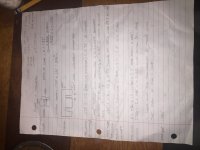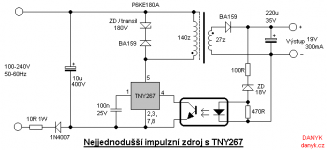MicrosiM said:Looks like you are attempting to build SMPS without any knowledge about how it works. I suggest you to read the safety paper here, SMPS is not your weekend project to play with.
Please don't make the mistake of assuming what I know/don't know, you don't know anything about me other than what I've said here. I have plenty of experience in other areas of the field, and am competent enough to read a data sheet and get something to work. If I weren't, I wouldn't have even gotten this far...right?
Its only one mistake, and you may not live to regret it. We are all here to help, this (is not?) place for those with minimal experience in the high voltage stuff. If you don't have that, I suggest you to read about SMPS for a while before any attempts. This thread / your account is subject to be closed the minute I see its too risky for you.
Excuse me, but you're going to have to give me a little more credit than that. I'm not some electronics noob who just wandered in here splicing MOSFETS and transformers together to see what will happen. I mean, that's kind of how it happened, but there was actual thought behind it. I understand your concern, but it's completely unfounded. I have to chuckle a little each time someone calls 400v 'high voltage', seeing as the vintage vacuum tube based flybacks in my TV collection all operate north of 23kv and those haven't killed me yet. THAT'S HIGH VOLTAGE! Lol
I work with HV quite a lot, frankly there's more to fear from the linear B+ supply in one of my old guitar amps than there is in this switching supply. I'll be fine, I think once I put a schematic up things will become much more clear. And if it's not a good design this time around, I'll learn from it and build a better one next time. Like Edison.



